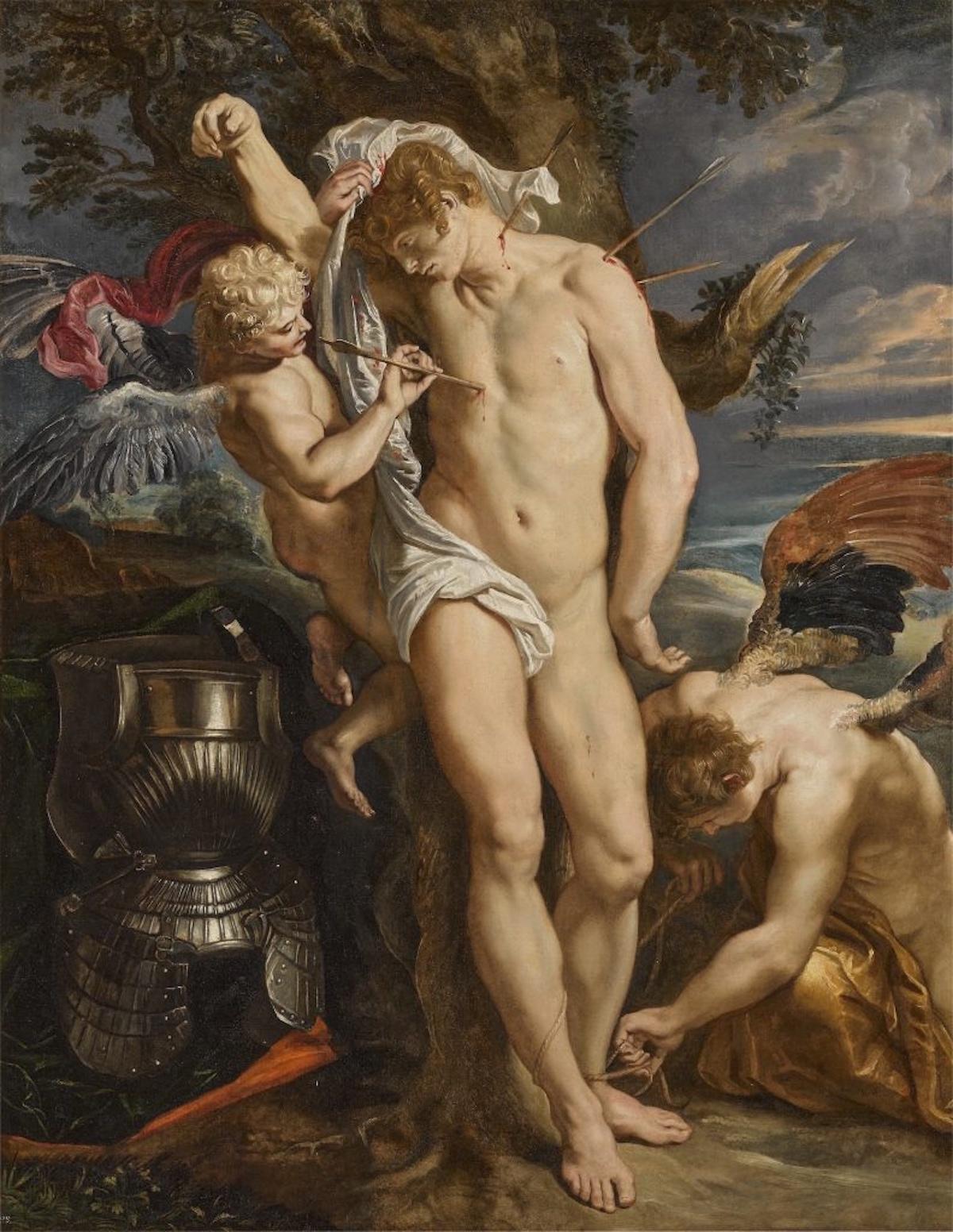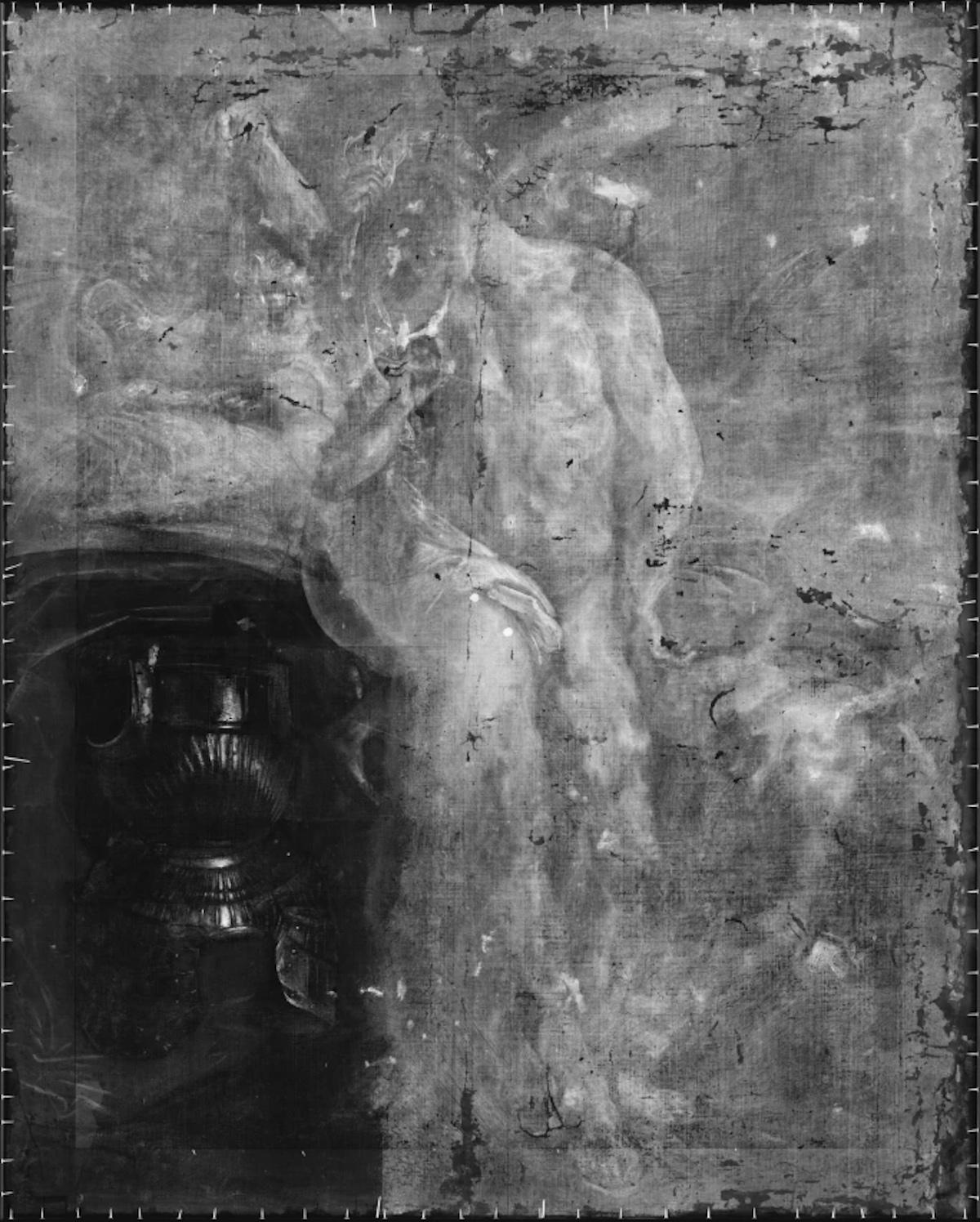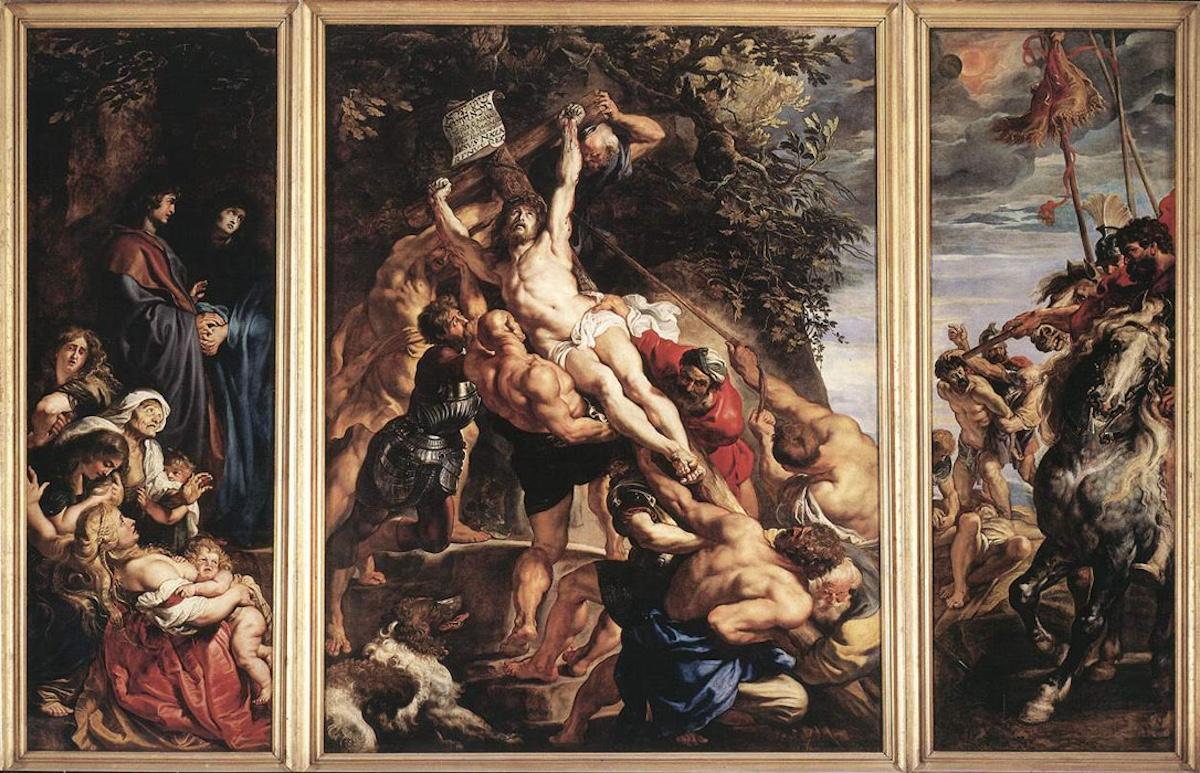The provenance history of the painting is quite complicated. It was first owned by Ambrogio Spinola, the first Marquis of Los Balbases in Genoa. The Spinola’s were a leading Genovese patron dynasty who were close with Rubens and most likely commissioned the painting. It was either executed in Italy or Antwerp anywhere between 1606 and 1610, given Rubens’ close connection with the family and his travels between Genoa in 1604 and his return to Antwerp in 1608. The painting stayed in the family: it was passed down to Ambrogio’s son, then a direct descendant, and so on, until 1733 when it is recorded to be owned by its last Spinola: Anna, Duchess of Archos, who settled in Madrid. Then, there is a gap from 1733 until the 20th century when it ends up in St. Louis, Missouri. It turned up in an auction in St. Louis, with attribution to French painter Laurent de la Hyre. So, what happened here?
According to Sotheby’s, when Anna Spinola passed away and because she was widowed at the time of her death, the painting passed out of the Spinola family along with the rest of Anna’s collection. The work was most likely inherited by her female descendants until it became untraceable until its reappearance on the market in Missouri in 1963, with no explanation as to the gap or where the painting was in those two-hundred-some years.

































